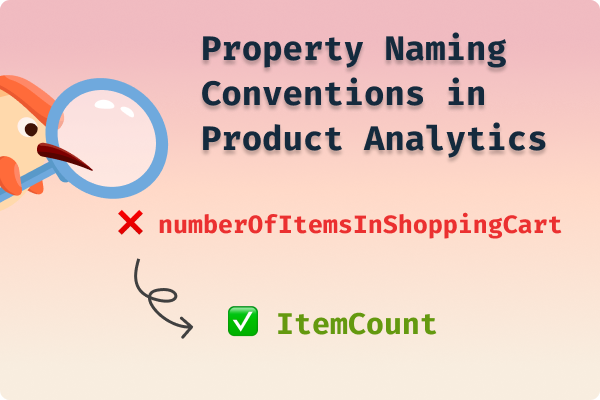In today’s competitive landscape, understanding why users drop off before completing critical actions on your website or app is essential for business growth. This is where funnel analysis comes in. By tracking users through various stages of your product funnel, businesses can uncover where and why potential customers are leaving.
In this blog, we’ll dive deep into how funnel analysis can help you identify drop-off points, improve user engagement, and ultimately increase conversion rates.
What is Funnel Analysis?
Funnel analysis is a method used to track the flow of users through a series of steps leading to a specific goal, such as making a purchase, signing up for a newsletter, or using a key feature. The funnel represents the entire user journey from the first interaction (awareness) to the final action (conversion).
Common funnel stages include:
- Awareness: The user becomes aware of your product.
- Interest: The user shows interest in learning more about your product.
- Consideration: The user compares your product with others.
- Conversion: The user takes the desired action, such as making a purchase.
- Retention: The user becomes a returning customer.
Tracking the flow of users from one stage to the next allows you to visualize how many users are dropping off at each step, providing valuable insight into areas that need optimization.
Why Do Drop-Offs Happen?
User drop-offs can occur at various stages of the funnel due to several reasons. Understanding these reasons is key to preventing them. Common causes include:
- Poor Onboarding: If users are confused or unsure of how to navigate your site or product after signing up, they are likely to leave.
- Friction During Conversion: Lengthy or complicated checkout processes, unclear payment options, or trust issues can cause users to abandon their purchase.
- Lack of Engagement: Users might lose interest if the product doesn’t meet their expectations or if key features aren’t immediately visible.
- Technical Issues: Slow loading pages, bugs, or mobile-unfriendly interfaces can push users away before they reach the final step.
How Funnel Analysis Helps Identify Drop-Off Points
Funnel analysis visually represents user behavior and highlights the conversion rates between each stage. By analyzing these conversion rates, you can pinpoint exactly where users are dropping off. For instance, if you see a significant drop-off between the “interest” and “consideration” stages, it might indicate that users aren’t finding enough value or clarity to proceed further.
By using funnel analysis, you can:
- Detect weak spots in your user journey: Understand at which step users drop off the most.
- Identify friction points: Highlight what might be causing hesitation or confusion.
- Optimize specific stages: Once you know where drop-offs occur, you can focus on improving those stages to reduce churn.
Real-Life Example of Funnel Drop-Offs
Let’s look at a real-life example of how a business identified and fixed drop-off points using funnel analysis. A SaaS company noticed a significant drop-off during their sign-up process. Users were getting to the page but not completing the sign-up. After conducting funnel analysis, they discovered that the number of required fields on the form was overwhelming. By reducing the number of fields and streamlining the process, the company saw a 25% increase in sign-up completion rates.
How to Use Funnel Analysis to Reduce Drop-Off Points
Once you’ve identified where users are dropping off, the next step is to address the issue. Here’s how to use funnel analysis to make improvements:
- Improve Onboarding: Simplify the onboarding process and provide clear instructions or tutorials to help users navigate your product.
- Optimize Conversion Steps: If users drop off during the checkout process, simplify payment options, reduce form fields, and ensure the process is mobile-friendly.
- A/B Testing: Use A/B testing to compare different versions of a page or process to see which one leads to better conversions.
- Refine the User Experience: Identify points of friction, such as slow-loading pages or confusing UI elements, and optimize them for smoother navigation.
Tools for Funnel Analysis
There are several tools available that can help businesses perform funnel analysis and track drop-off points, including:
- Google Analytics: Provides insights into user behavior across your site and shows where users drop off.
- Mixpanel: Offers detailed funnel analysis and focuses on user retention and engagement metrics.
- Hotjar: Provides heatmaps, session recordings, and funnel analysis to understand where users face friction in their journey.
Each of these tools helps you break down your funnel into actionable insights, making it easier to identify bottlenecks and optimize the user flow.
Ongoing Funnel Optimization
Funnel analysis isn’t a one-time task. User behavior constantly evolves, and so should your funnel. Continuous monitoring allows you to detect new drop-off points and adapt accordingly. Set up automated reports and alerts to keep track of any shifts in conversion rates, and consistently refine your funnel based on the latest insights.
Conclusion
Funnel analysis is a powerful tool that helps businesses identify where potential customers drop off during their journey and what might be causing the issue. By leveraging this insight, you can make targeted improvements to reduce friction, streamline the user experience, and ultimately improve your conversion rates. With the right tools and a continuous optimization mindset, funnel analysis can lead to better user engagement and long-term success for your product.



.svg)















.png)




.svg)
